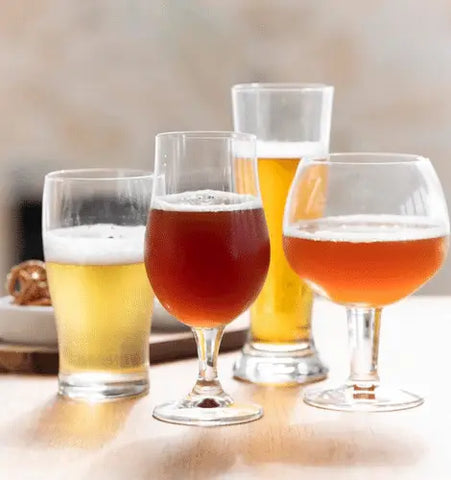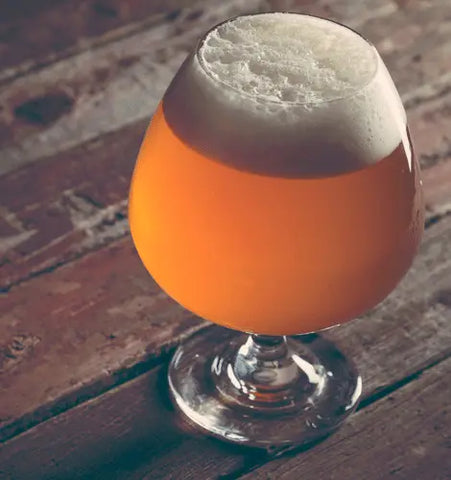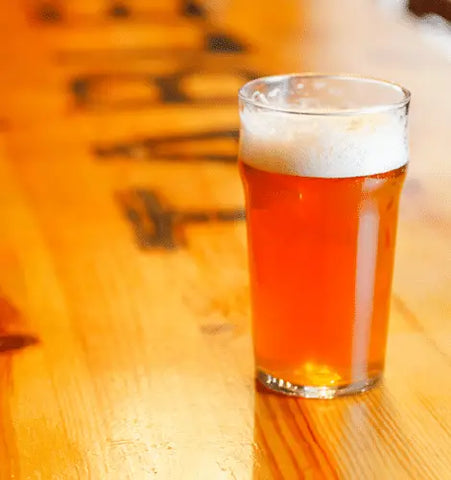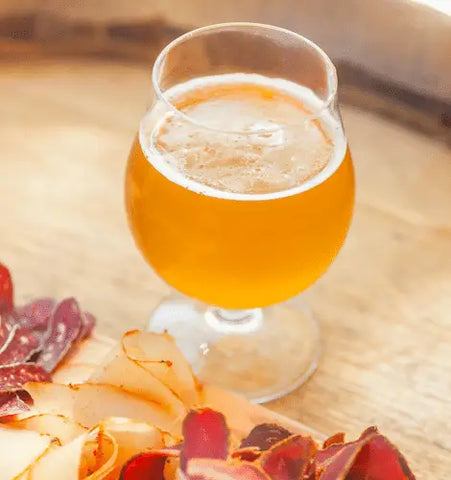
New drinkers or even seasoned ones discovering this beer always look forward to learning more about IPAs. Whether it’s finding out the meaning behind the name or its popularity, there is a plethora of confusing details out there about IPA beer. However, if you love floral, bitter, piney, or fruity hop beer, we know you’ll definitely enjoy it. Here is a detailed breakdown of IPA beer from its origins to becoming the epitome of Pale Ale.
What is IPA Beer?
IPA beer, also known as the Indian Pale Ale, is a hoppy beer under the extensive list of Pale Ales, with a higher alcohol by volume (ABV) than the rest. Some common IPA characteristics include;
-
Bigger Hop Aromatics: Traditionally, IPAs have higher levels of hop aromatics that are floral, fruity, citrusy, piney, and earthy. These are still synonymous with modern IPA beer styles.
-
Higher Bitterness Levels: Drinkers who are less familiar with drinks with high bitterness levels might find IPAs quite unwelcoming. But it’s one of the elements that make IPAs so great.
History of IPA
IPAs are generally brewed with a distinct ale yeast, different from the others used in brewing lagers. The origin of IPAs traced back to the 18th and 19th centuries when the East India Company used to export them to the British colonies. The beer was brewed with enough hops to keep it crisp while making its long journey from England to India.
Over the years, beer scholars and historians have critically studied this ale to determine its historical accuracy and whether its colonial past is sensible. The Beer Judge Certification states that most agree that what later became known as IPA was pale ale prepared for shipment to India in the late 1700s and early 1800s. In 1975, Anchor Brewing from San Francisco released the Liberty Ale, a beer similar in style to an IPA and is arguably the beer that started the craft revolution.
Is IPA Considered Pale Ale?
IPA beers are considered a style of Pale Ale. Brewing Pale Ale uses pale malts with medium bodies and balanced flavour profiles. Under the Pale Ale category, you find English Pale Ales, American Ales, Blonde Ales, and Indian Pale Ales (IPA). Furthermore, there can be multiple alternatives of each style of Pale Ale, such as an Extra Pale Ale (XPA) and a Hazy IPA. Unlike other beers, IPAs have a higher alcohol content, up to 6%, with a few sub-styles having more or less the average ABV.
What are the Popular IPA Sub-Styles?
IPA beer styles fall into classifications based on the location of origin, colour, ingredients, and strength. Here is a breakdown of the classification categories.
Classification by Country of Origin

-
American IPA: The American IPA is the classic example of what anyone without prior knowledge of the style will think about. It appears medium-gold to light amber with a generous amount of white to off-white head. While the flavour of the hops remains distinct, there could be subtle malt aromas of toast, grain, and caramel. The BJCP adds that the American IPA is a mildly strong American Pale Ale that is hop-saturated and bitter, combining modern American hop varieties.

-
British IPA: British IPA beer originated, well you guessed it, in Britain and still maintains a clear malty, bitter taste that is monotone. The story behind this beer is that British sailors heading to India packed beer barrels with hops to preserve the beer. As a result, the hops became less fruity, leaving behind a bitter-tasting beer after the long journey to the east.

-
Belgian IPA: The Belgian yeast used to make this style gives it a fruity, spicy aroma and flavour with additional sweet, bready, and warm notes. The warm notes in this IPA merge the magnificent hop content with the delicate nature of Belgian-style brews made from Belgian yeast.
Classification by Special Ingredients
-
Hazy IPA: A hazy IPA is, well, hazy. This style of beer is much cloudier than most, to the point that you can’t see through them. Hazy IPAs aren’t too filtered, are packed with hops and generally aren’t too bitter compared to other IPAs. These beers are creamier and fuller than other IPAs, and have a delicious fruity hop character to them.
-
Fruity IPA: While it is uncommon to add fruit to beer, ungodly for some, IPAs blend perfectly with fruity flavours. Brewers can complement the fruity flavour in the hops by adding fruit puree in the brewing process. Adding puree rather than fruit juice is guaranteed to produce better results.
-
Rye IPA: Rye IPA beer is a modern blend of American and New World hop varieties with spicy and piquant notes from the rye malts. Rye IPA is medium-gold to light reddish-amber, closely resembling the American Amber Ale.
Classification by Coast
-
West Coast IPA: West Coast IPA beer started the fruity hop trends by embracing fruity yet rowdy flavours that reduce bitterness. They are still bitter but with a perfect balance of a crispy clean body with higher carbon content and tropical fruitiness.
-
East Coast IPA: The East Coast IPA is not an official classification but a blend of British and West Coast IPA. Its flavours are piney with malt-like tones. It is slightly darker than the West Coast IPA but with a more complex flavour than the British IPA.
Classification by Strength
-
Imperial/Double IPA: Imperial or double IPAs are stronger versions of the American and New England IPAs with higher alcohol content. They are above 7.5-8 percent ABV with a variety of hop notes with each pour. Doubles also present a variety of sub-styles that IPA enthusiasts will love.
The IPA beer industry keeps evolving, with brewers discovering new ways to improve the beverage. We can therefore expect new styles and sub-styles to come up and new descriptions for old styles. Generally, it is conclusive that IPA beer sub styles are flexible and keep expanding, evolving, and more experimental. However, identifying subtle characteristics like bitterness, fruity flavours, and aromatic ingredients will guide your beer decisions.
